Skip over navigation
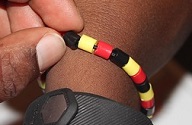
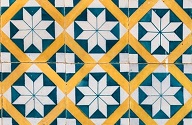
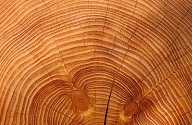
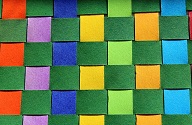
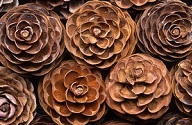
Children often enjoy spotting patterns and making patterns with lots of different things, including themselves.
Adults could provide a 'pattern of the day' with objects for children to copy, extend and create their own. They could make deliberate mistakes for children to spot. Parents and carers could join in.
Or search by topic
Number and algebra
Geometry and measure
Probability and statistics
Working mathematically
Advanced mathematics
For younger learners
Pattern Making
Age 3 to 5
Making and describing patterns





Children often enjoy spotting patterns and making patterns with lots of different things, including themselves.
Adults could provide a 'pattern of the day' with objects for children to copy, extend and create their own. They could make deliberate mistakes for children to spot. Parents and carers could join in.
The Activity
Children copy and continue an AB repeating pattern with blocks, then do it in other colours and with other materials such as small toys, leaves and twigs or by printing and sticking shapes on long pieces of paper. They can progress to more complex ABB or ABC repeating patterns and to make growing patterns.
Children copy and continue an AB repeating pattern with blocks, then do it in other colours and with other materials such as small toys, leaves and twigs or by printing and sticking shapes on long pieces of paper. They can progress to more complex ABB or ABC repeating patterns and to make growing patterns.
Encouraging mathematical thinking and reasoning:
Describing
What do you notice about the pattern?
Can you say the colours - red, blue, ...?
Tell me about your pattern.
What do you notice about the pattern?
Can you say the colours - red, blue, ...?
Tell me about your pattern.
Reasoning
What is the same and what is different about this one and your copy?
I wonder which one goes next? I think the next one is blue - oh, don't you agree?
Can you explain how the pattern should go?
What is wrong with this pattern?
Is that something you know or did you guess?
What is the same and what is different about this one and your copy?
I wonder which one goes next? I think the next one is blue - oh, don't you agree?
Can you explain how the pattern should go?
What is wrong with this pattern?
Is that something you know or did you guess?
Opening Out
Can you make your own pattern along this strip?
What is the pattern called?
What is the rule for your pattern?
How is your pattern like this pattern? How is it different?
Can you continue this staircase pattern? What do you notice?
Can you make your own pattern along this strip?
What is the pattern called?
What is the rule for your pattern?
How is your pattern like this pattern? How is it different?
Can you continue this staircase pattern? What do you notice?
Recording
Can you record your pattern with stamps?
Can you make a staircase pattern with stickers?
Can you record your pattern with stamps?
Can you make a staircase pattern with stickers?
The Mathematical Journey
Patterns:
- copying the pattern by matching cubes one at a time
- copying by complete units e.g. picking up a red and a blue cube together
- continuing the pattern in ones or in complete units
- correcting an error e.g. spotting a missing cube or reversed colours
- identifying the rule of the pattern - "It should go red, blue, blue"
- noticing a growing pattern - "It's like a staircase"
Counting and cardinality:
- counting the number of items in the unit of repeat, or the towers in a staircase pattern
Adding and subtracting:
- generalising about a staircase pattern - "It's one more each time!"
Position and spatial properties:
- using the vocabulary of position - "The red comes next", "It's blue between the red and the yellow"
- reversing units to make reflecting patterns e.g. ABC CBA
Development and Variation
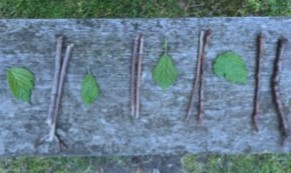 Provide more complex repeating patterns: ABC, ABB, ABCD.
Provide more complex repeating patterns: ABC, ABB, ABCD.
Vary the materials and media, indoors and out.
Make action or sound patterns and record them with invented symbols.
Make growing patterns, e.g. going up in ones.
Make reflecting patterns with peg boards, mirrors and constructions.
Story, rhyme and song links
The Shopping Basket by John Burningham
There Was an Old Lady Who Swallowed a Fly
Goldilocks
The Gingerbread Man
 Provide more complex repeating patterns: ABC, ABB, ABCD.
Provide more complex repeating patterns: ABC, ABB, ABCD.Vary the materials and media, indoors and out.
Make action or sound patterns and record them with invented symbols.
Make growing patterns, e.g. going up in ones.
Make reflecting patterns with peg boards, mirrors and constructions.
Story, rhyme and song links
The Shopping Basket by John Burningham
There Was an Old Lady Who Swallowed a Fly
Goldilocks
The Gingerbread Man
Resources 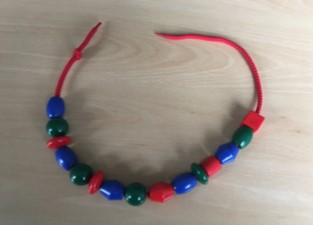
Coloured cubes, beads, small toys, leaves and twigs; printing and sticking shapes.
Pegboards, mirrors, construction materials.
Long strips of paper for making patterns.
See the Erikson Early Math Collective website for more activities about patterns.

Coloured cubes, beads, small toys, leaves and twigs; printing and sticking shapes.
Pegboards, mirrors, construction materials.
Long strips of paper for making patterns.
See the Erikson Early Math Collective website for more activities about patterns.
Download a PDF of this resource.
Acknowledgements: Helen Thouless and the pattern group, Wandsworth


